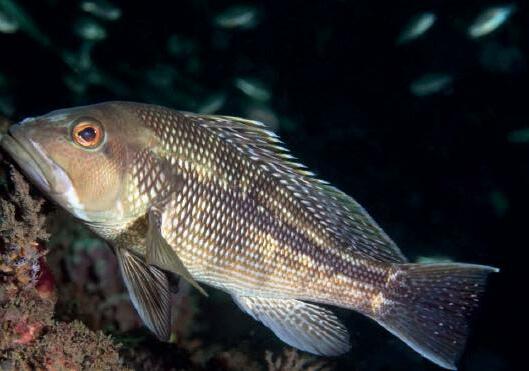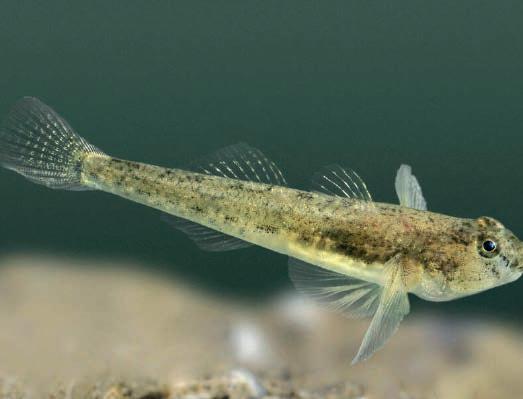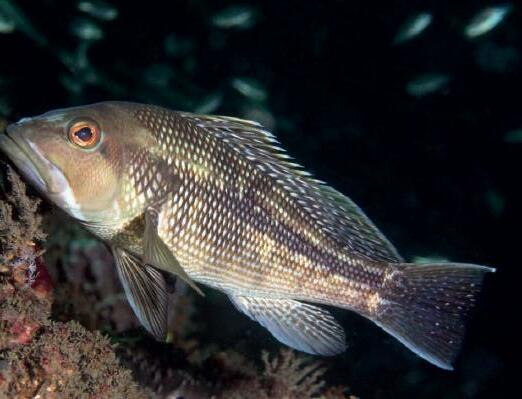
6 minute read
Breaking the surface
Think of Suffolk’s estuaries. The majestic Stour and Orwell, wild and yet juxtaposed against an international shipping backdrop, and the pretty Deben with quiet walks and Sutton Hoo. There’s the Alde and Ore, famous for Snape Maltings, nature reserves and amazing shingle spit of Orford Ness, and then up to the Blyth, perhaps in parts the most natural estuary, no longer constrained by straight-jacket walls. It’s easy to find a quiet place on them all, to listen to the call of the oystercatcher or curlew and hark back to a wilder time.
Walking along any of our estuaries you will come across wildlife. All our estuaries are crucial for water birds and are becoming increasingly important for marine mammals, with more sightings of common seal. But what of their value to the wildlife unseen, the myriad of species underneath the water? What is it, for example, that is bringing in the seals from the open sea?
Advertisement
The answer, of course: fish.
Ebb and flow
Despite their initial muddy, windswept appearance, estuaries are productive environments, the result of years of deposition of riverine muds. These habitats, including the main river channel, side channels, mudflats and saltmarshes, act as key nursery grounds for marine fish, as well as important transitional corridors for migratory species.
Because of the tidal ebb and flow, these are highly dynamic environments with rapid changes in temperature, oxygen, turbidity, and salinity. Whilst the perpetual change will drive diversity, the constant fluctuation of the tide creates a stressful, even hostile environment for most species. This limits diversity in the short term, but benefits those species that can cope and adapt, enabling them to prosper and occur in high numbers. The abundance of fish

Ben McFarland
is Head of Conservation for Suffolk Wildlife Trust.
LITTLE TERNS: ALAMY Little terns breed at a handful of sites along the Suffolk coast.
Suffolk’s estuaries are iconic and special places. Each is different, but all are protected and internationally recognised for their importance for wildlife. We take a dive beneath the surface and meet the fish that call them home. BY BEN MCFARLAND

Fish are bringing common seals in from the open sea.


is then beneficial to predators, like common seals, otters and ospreys.
Hazlewood Marshes on the Alde and Ore estuary is one place where fish are thriving. This former freshwater marsh was transformed overnight in December 2013 as the surge tide punched holes through the walls. Since then, it has been intertidal and an increasingly important part of the wider estuary ecosystem. Sea bass, common goby, eel, flounder, pipefish, sand goby, sand smelt and thin-lipped grey mullet all now use the reserve, and in huge numbers.
One survey in 2017 recorded 8,000 (mostly young) fish, suggesting that Hazlewood Marshes, quite rapidly, has become an important nursery ground. Having a large area unconstrained by seawalls has provided more shallow areas. These calmer, warmer waters are ideal for juvenile fish to feed and grow. Whilst there are some excellent freshwater reserves behind seawalls, wildlife prospers despite the physical boundaries, not because of them.

All about the bass
A critical part of the estuarine ecosystem is the saltmarsh. This zone, extending from the high neap tide, is twice as productive in terms of invertebrate biomass as the subtidal regions within the main river channel. The shallow waters are important for juvenile bass, as the rich feeding means they can grow to at least 8cm by late autumn. This rapid growth is critical if they are to survive their first winter, as they often stop feeding completely in cold water. Larger bass also use the deeper channels of the estuaries, ambushing smaller fish as they exit on the ebb tide. Sadly, the UK stock is overexploited and rapidly declining. You can choose sustainable sources, like farmed seabass grown in a recirculating system (although any farmed seabass is preferable to wild fish).
Grey mullet are tidal specialists. Strong swimming, they move rapidly with the tide. Spawning takes place in the late summer and early autumn, with young post-larvae juveniles coming into estuaries around mid-September, avoiding the worst of the winter weather. Grey mullet stocks are also under pressure due to the demand for fish meal used in animal feed. The past decade has seen not only a decline in the number of mullet being caught, but also a sharp decline in overall size. This is a known indicator of declining stock, making estuaries and reserves like Hazlewood Marshes even more important.

RIGHT: The call of the curlew haunts many estuaries. FAR RIGHT MIDDLE: Fish surveys at Hazlewood Marshes are revealing the secret species thriving beneath the surface.
Courting favour
Of all the fish found in Suffolk’s estuaries, the humble stickleback is the easiest to overlook. In the UK, there are three recognised species. The three-spined and the nine-spined sticklebacks can both cope with a wide-ranging salinity, and are found in freshwater, brackish water and even the open sea. The fifteen-spined stickleback is a marine species. Sticklebacks have a fascinating, ritualized breeding behaviour. First, the
FABULOUS FISH
Meet some of the star fish species finding a home in our estuaries on Suffolk's coasts.

STICKLEBACK
The three-spined stickleback is found in freshwater, brackish water and even the open sea.



Hazlewood Marshes.
Estuaries are key nursery grounds for marine fish and corridors for migratory species
male constructs a tunnel nest out of vegetation, glued by threadlike, mucous secretions from the kidneys, known as ‘spiggin’. By spring, the male develops a bright red underside and uses this to dazzle his mate, performing a striking 'zig-zag' courtship dance. The female enters the nest to lay her eggs, the male following directly to fertilize them. The male then is on guard for around four weeks until they hatch, vigorously attacking any potential predator, fanning the eggs with his pectoral fins supplying them with critical oxygen.
As we begin to fully understand the diversity of species that thrive in and around our estuaries, and their importance for bio-abundance, it is crucial that we think creatively about how these landscapes and seascapes can prosper for wildlife and people. They are ever-changing and, in many ways, uncontrollable; perhaps that’s why we are so fascinated by them. Having more naturalised areas around our estuaries will benefit wildlife, including fish and the many species that predate them. In the end, I suspect we will find that nature knows best, and that by removing the barriers, walls and structures, we will see the greatest benefits.
Find out what we're doing
suffolkwildlifetrust.org/wilderlandscapes








GREY MULLET
A tidal species spawning in late summer with jeveniles coming into estuaries in mid-September.
COMMON GOBY
Goby are thriving in the calmer shallow areas at Hazlewood Marshes on the Alde and Ore estuary.
SEABASS
Saltmarshes are ideal habitats for juvenile bass due to their rich food sources and shelter.

FLOUNDER
Uses Hazlewood Marshes in huge numbers, feasting on marine worms, crustaceans and molluscs.





